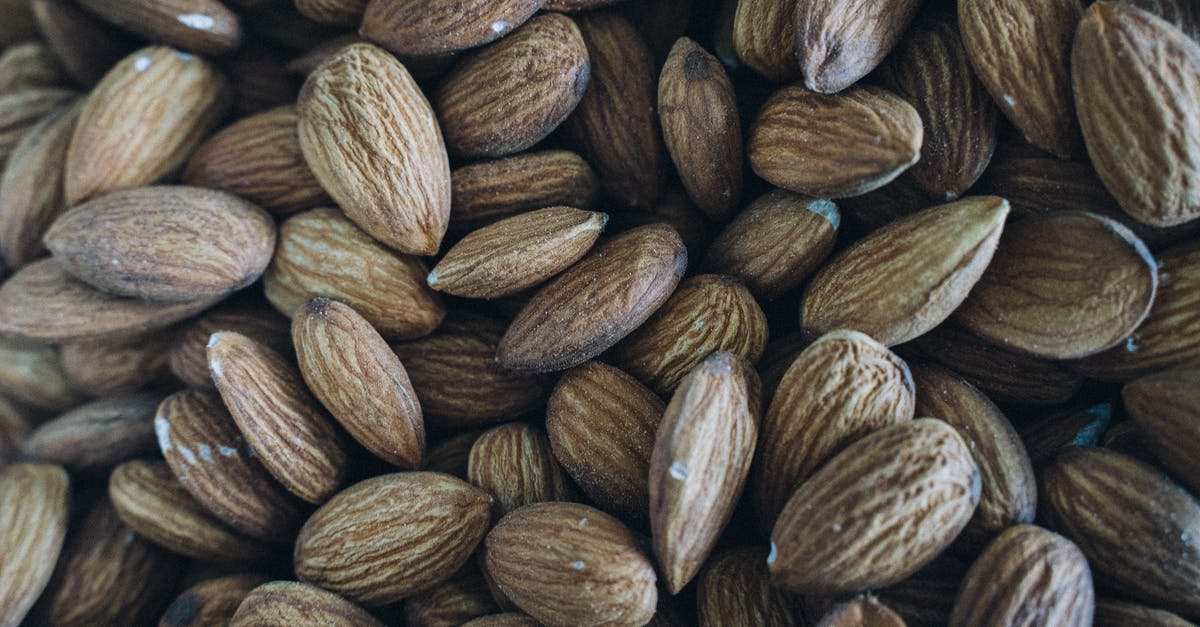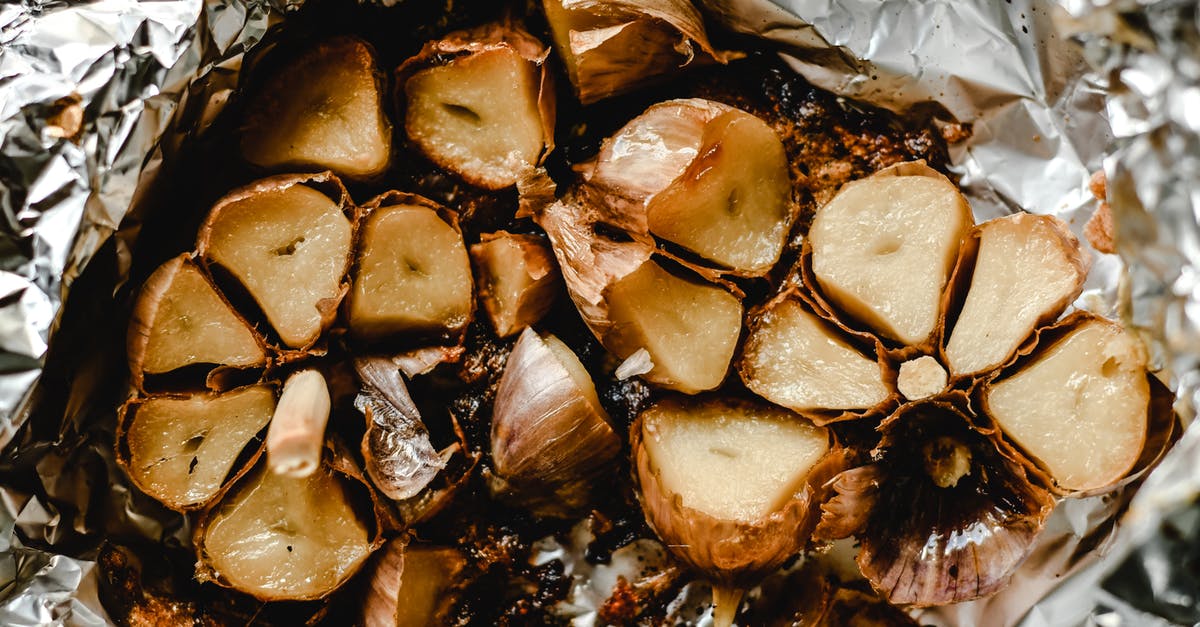Minimum temperature for slow roasting almonds

I've read that almonds roasted slowly at lower temperatures are healthier, which seems to make sense to me.
I found a couple of recipes suggesting 8hrs at 75 deg C or 4hrs at 95 deg C.
With that info, I roasted some at 90 deg C and checked them every hour or so. After 5hrs they were good and crunchy but still didn't have that strong roasted flavour that I was hoping for.
Does the roasted flavour (that I didn't get) come from the Maillard reaction and thus require a temperature over 150 deg C?
If not, what temperature do I need to get that flavour?
Best Answer
I found these slides that may help. The information is a difficult to interpret, but the page with conclusions says that the optimal roast uses the lowest possible temperature for 20 to 30 minutes. This however is information for the food industry and it is clearly geared towards increasing shelf-life which you are probably not too concerned about.
If you look for the slide with the title 'Generation of flavor compounds during roasting', you will get another perspective. As I understand the graph, a roast at 200ºC (400ºF) for around 25 minutes gives maximum flavour.
This article, although about roasting walnuts, gives clearer information. It states that walnuts are typically roasted at 100-180ºC (212-356ºF) from 5 to 60 minutes. You could infer from this that roasting at 100ºC for an hour is as low and slow as you can go. The conclusion to this article is that the "best sensory properties" are exhibited after roasting at temperatures between 130-150ºC (266-300ºF) for 15 to 20 minutes.
I think that gives you at least four worthwhile experiments to try:
- 120ºC for 25 minutes (recommendation from the slides)
- 200ºC for 25 minutes (the time/temperature profile that appears to give maximum flavour)
- 100ºC for 60 minutes (the apparent limit of low/slow roasting walnuts)
- 140ºC for 17 minutes (the recommendation for roasting walnuts)
Update: I remembered a fact about the Maillard reaction that could point in another direction of experimentation. Although the reaction needs relatively high heat to get going, once browning has started, the reaction will continue at lower temperatures (as low as 60ºC is what I remember reading). So perhaps you could kick start the reaction by initially roasting at 150ºC (300ºF) or above and then dropping the temperature right down to around 75ºC (170ºF) as soon as browning starts.
Pictures about "Minimum temperature for slow roasting almonds"



Quick Answer about "Minimum temperature for slow roasting almonds"
Roasting at a temperature below 265°F (130°C) will minimize acrylamide formation in roasted almonds. It is advisable to roast almonds at a lowest temperature possible for a light or medium- roasted product to minimize acrylamide formation. Estimated dietary exposures of acrylamide from roasted almonds are very low.What temperature do you slow roast nuts at?
Pour the nuts onto a rimmed baking sheet and spread them into a single layer. Put in a cold oven and set the temperature to 170\xb0F or thereabouts. Roast overnight (or 8 hours) or until the oil is absorbed and the nuts appear matte.How do you roast almonds at low temperature?
Preheat oven to 325 degrees. Line a rimmed baking sheet with parchment paper or foil for easy cleanup. If roasting whole almonds, roast for 10-15 minutes. If roasting slivered or sliced almonds, roast for 8-12 minutes.What temperature should I roast almonds?
Preheat the oven until it reaches 325 degrees. Place a sheet of parchment paper on a light colored, large baking sheet. Spread almonds on the lined baking sheet in a single layer. Toast whole almonds for about 9 to 12 minutes, sliced almonds for about 6 to 8 minutes, and slivered almonds for about 7 to 9 minutes.How long and at what temperature do you toast almonds?
Oven method: Preheat the oven to 350 degrees Fahrenheit. Place the nuts on a baking sheet in a single layer. Bake for about 7 to 8 minutes until fragrant and golden brown (if sliced or slivered), stirring once.What temperature should I roast nuts at?
More answers regarding minimum temperature for slow roasting almonds
Answer 2
I imagine the argument for almonds roasted at lower temperatures relates to the notion that roasting at higher temperatures would change the chemical structure of the oils and others in the nut. This is a pretty common notion like with cold pressed oils vs. oils that have been heated through its processing. http://www.wisegeek.com/what-is-cold-pressed-oil.htm
However, as you've said, if you just heat it at a low temperature, you're not getting the yummy toastiness that you enjoy.
I would posit that the best way to get the toastiness without impacting ALL the nut would be to toss them on a hot pan (smoke point for almond oil is ~220c) as quickly as possible to til you juuuust smell the toastiness as to not impact the beneficial oils on the inside. I don't know if this would quite work but it's worth a shot :)
After toasting, then you can toss the nuts with your seasoning as to not burn the garlic/rosemary. I'm not even sure if you need olive oil for an adhesive...
Answer 3
You can try roasting in two steps: "Hot air roasting for almonds can be optimized by applying a two-step roasting process. The first step uses an intermediate temperature to stabilize the nut microstructure, and the second step uses a higher temperature to generate the desired flavor and color."
Roast at a lower temperature for a longer period of time to reduce moisture content without destroying the cellular microstructure, which extends shelf life, and perhaps preserves nutrients for health.
Then finish it off by increasing the temperature to Maillard reaction levels - 150ºC (300ºF) or so - until it browns and you can smell the aromas released. The first step of removing moisture helps achieve this.
Sources: Stack Exchange - This article follows the attribution requirements of Stack Exchange and is licensed under CC BY-SA 3.0.
Images: Anna Tarazevich, Tima Miroshnichenko, Eva Bronzini, Milan
